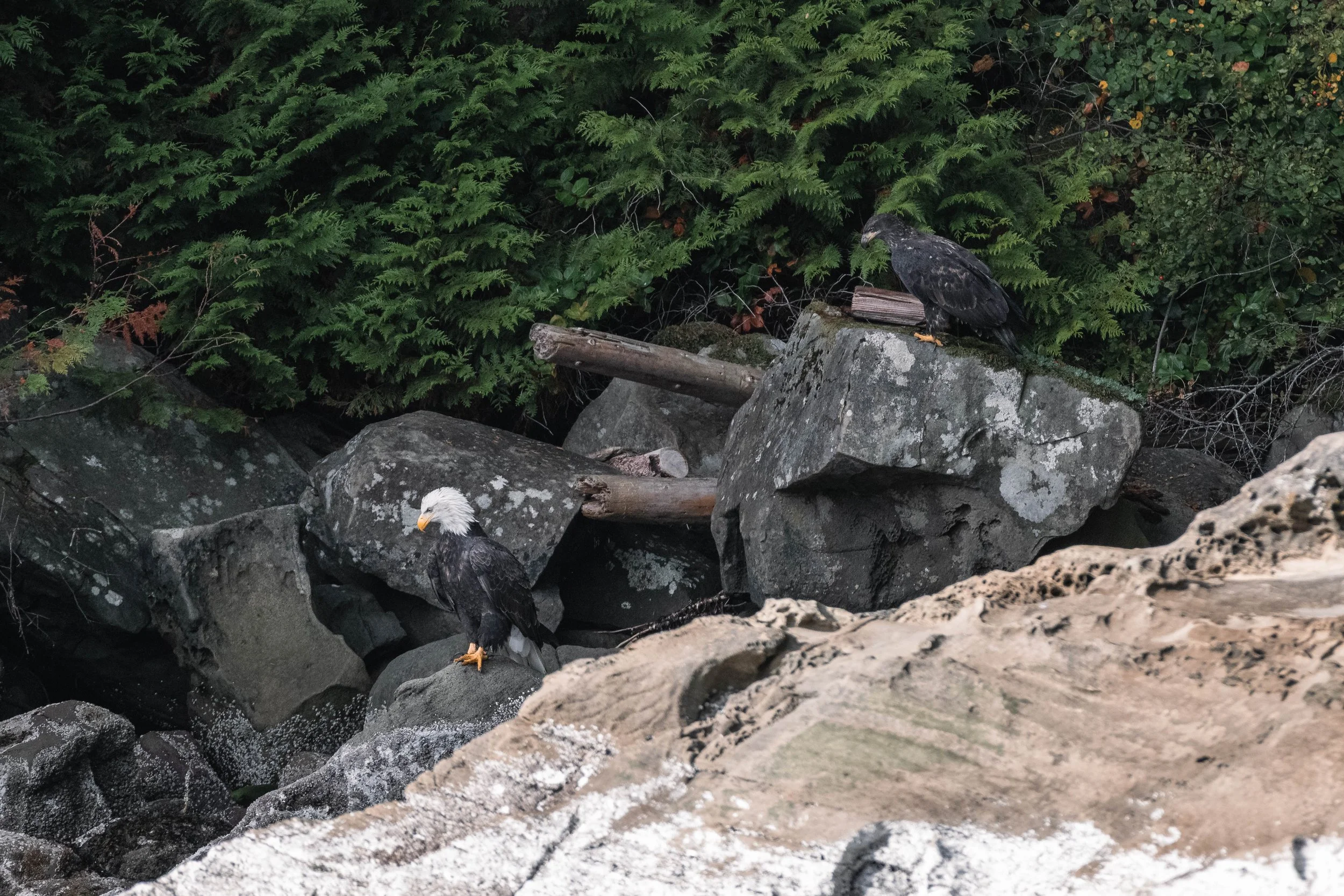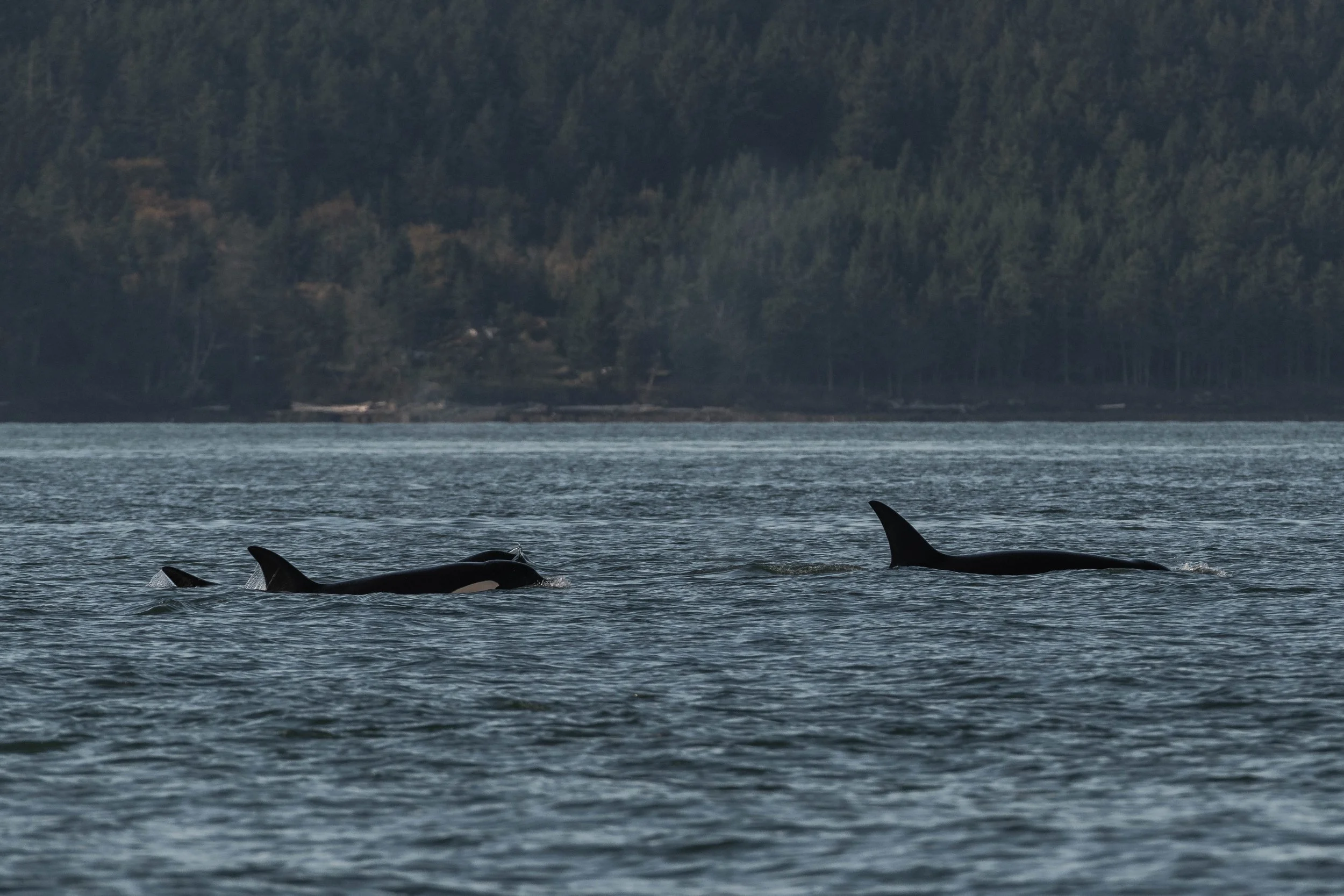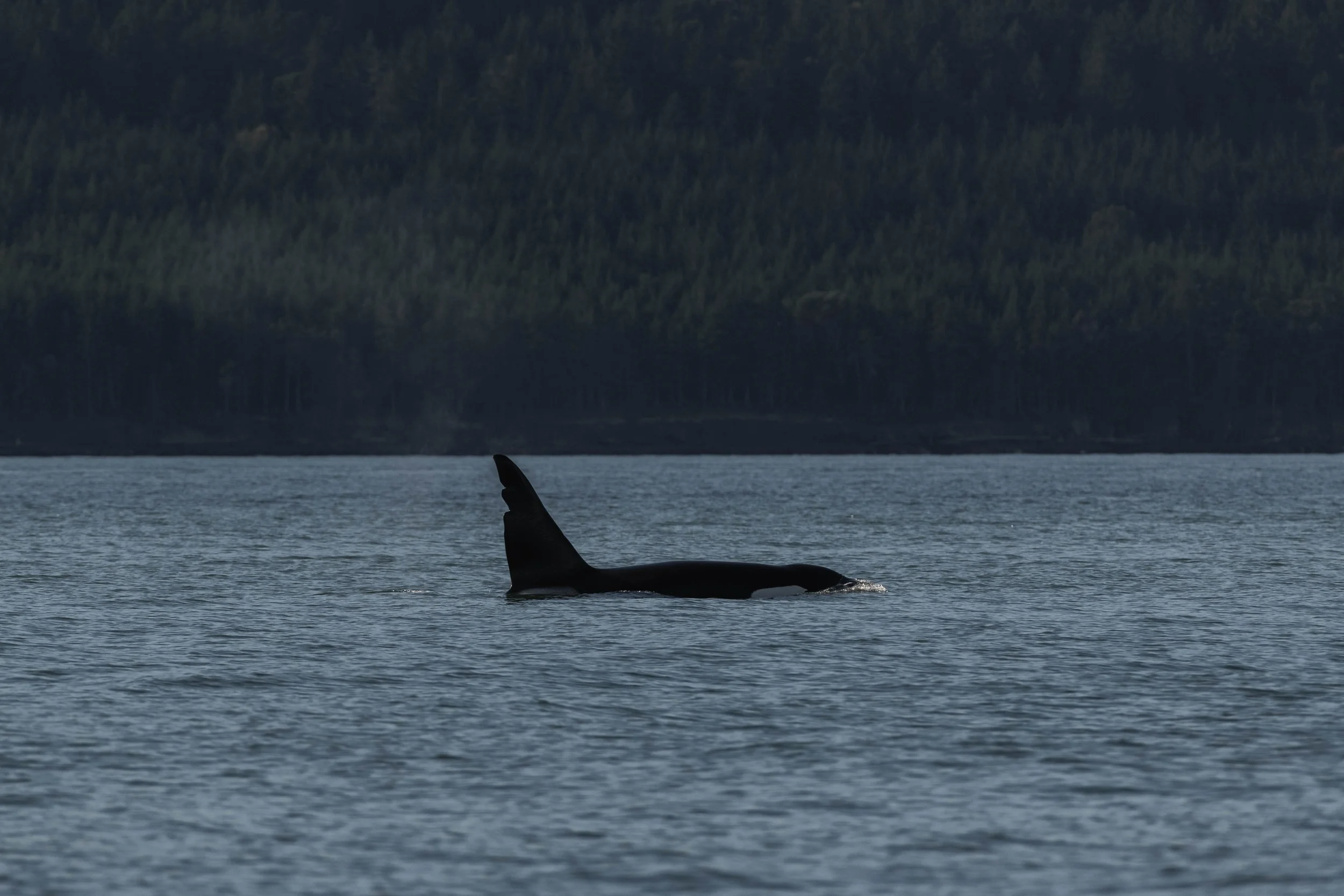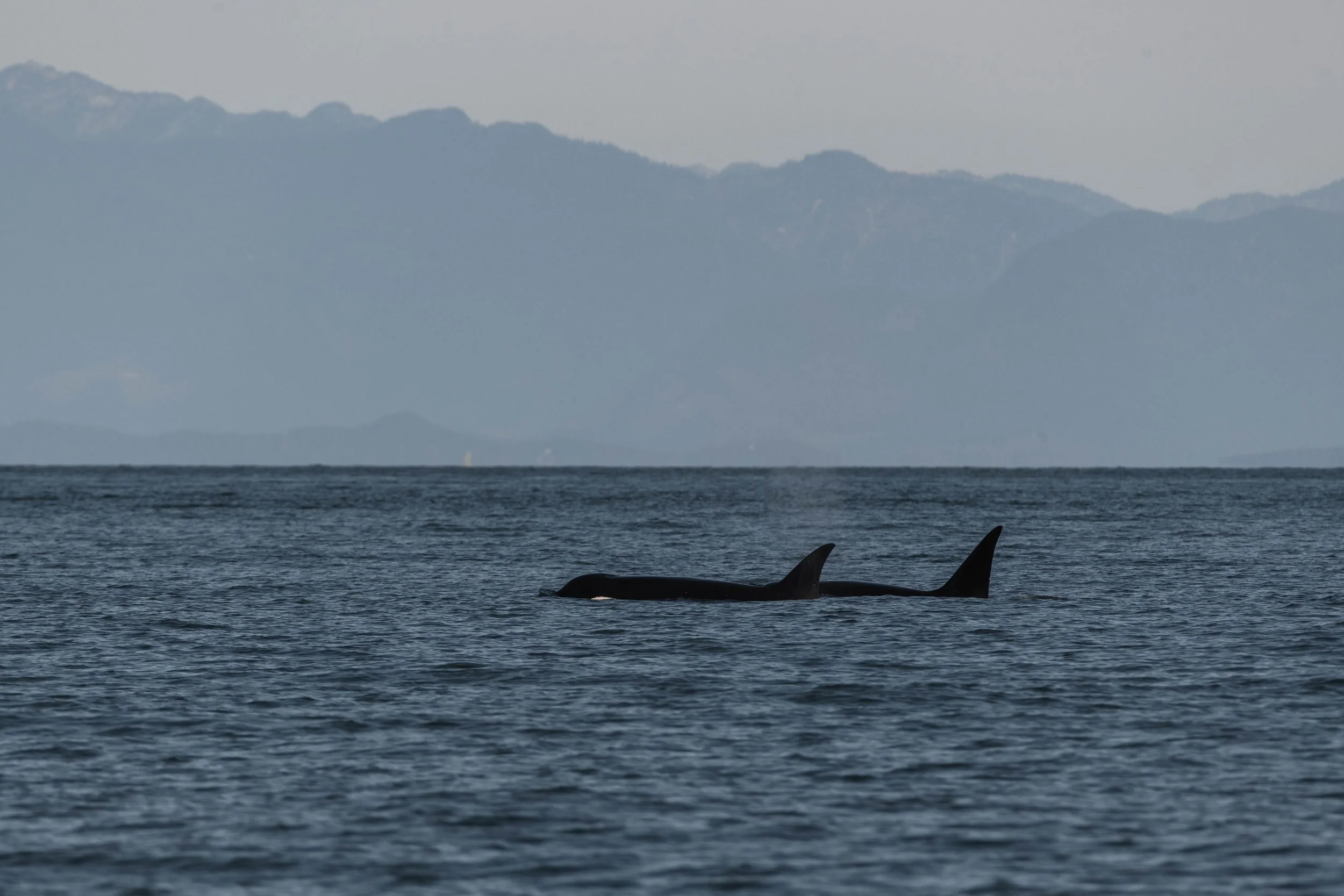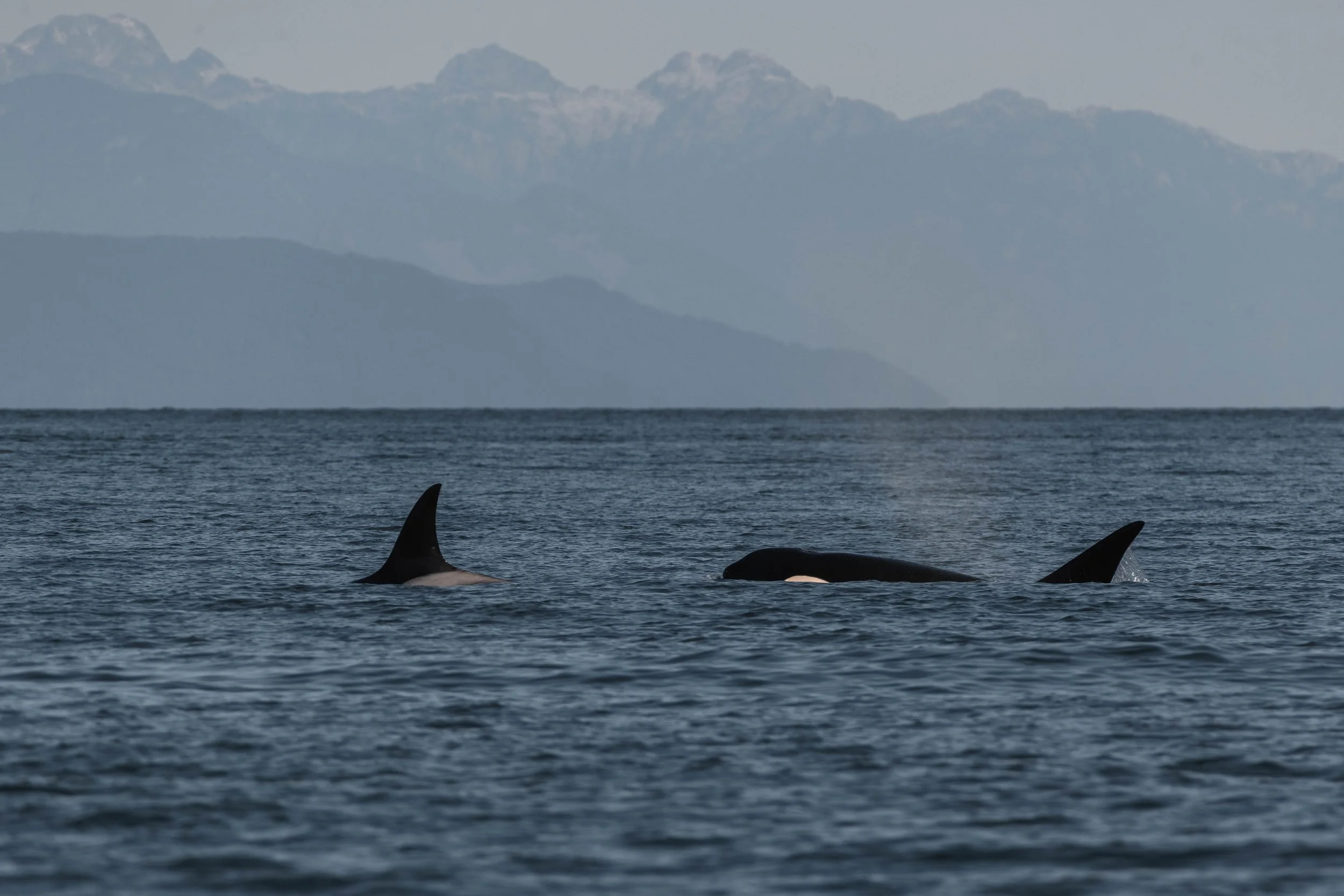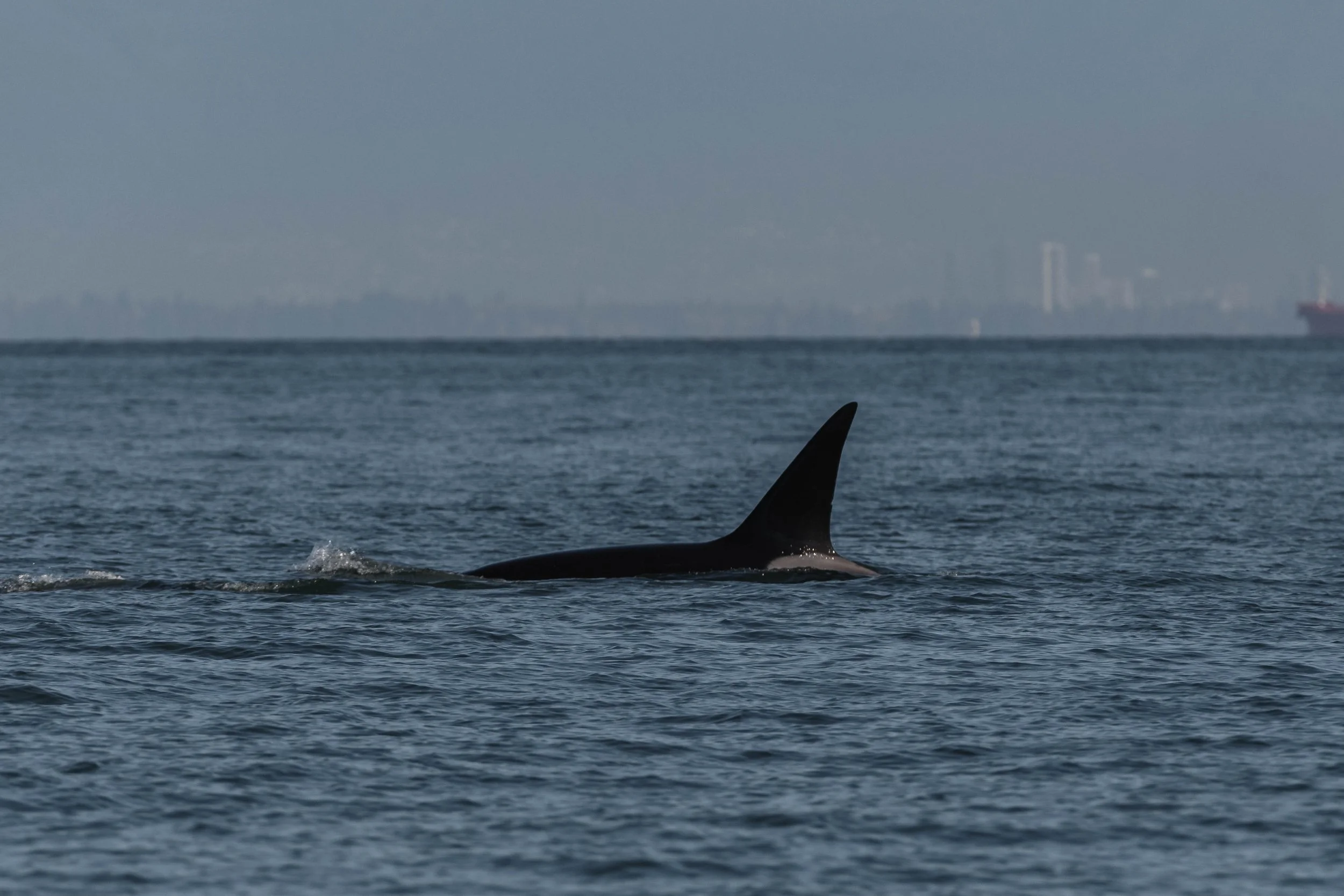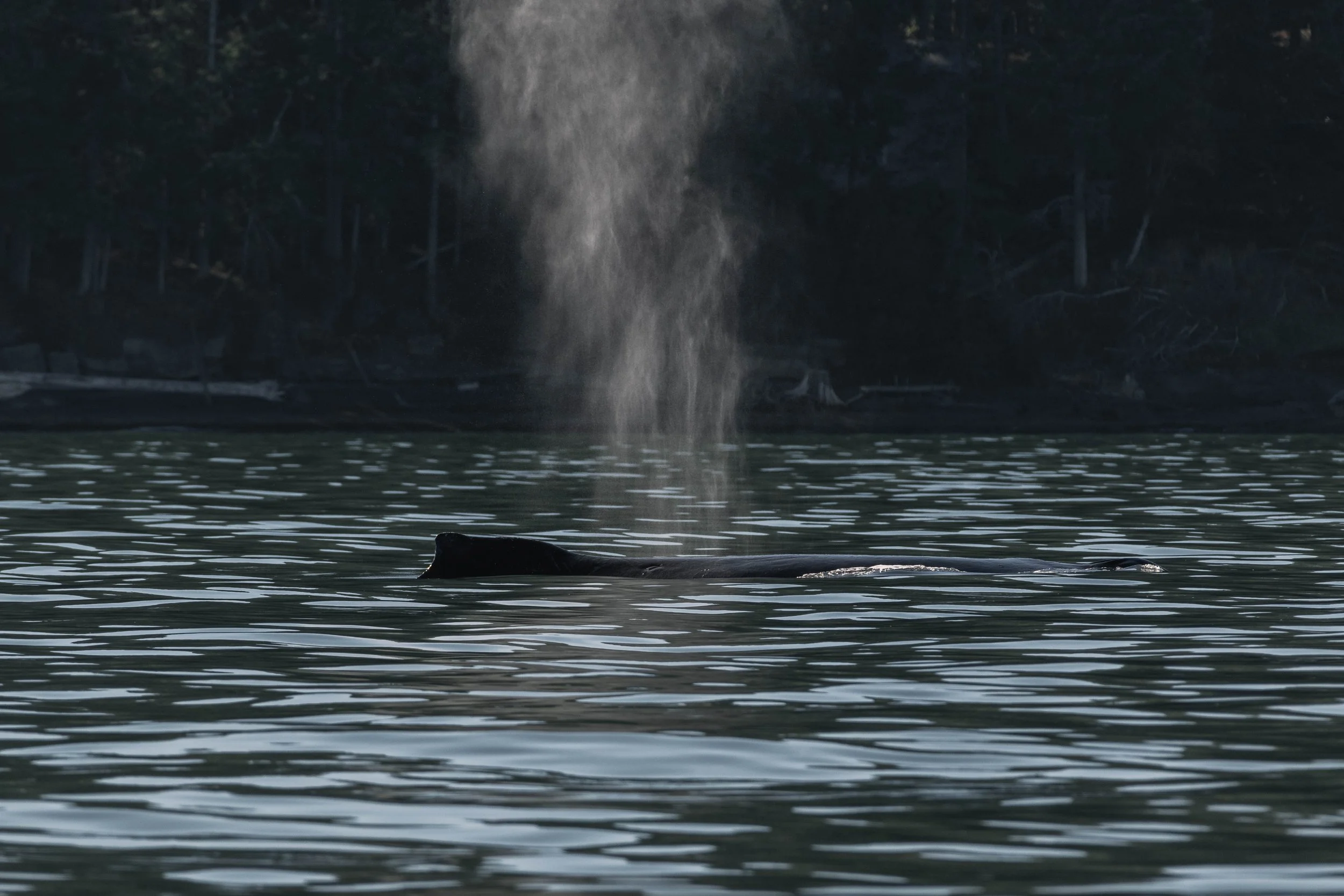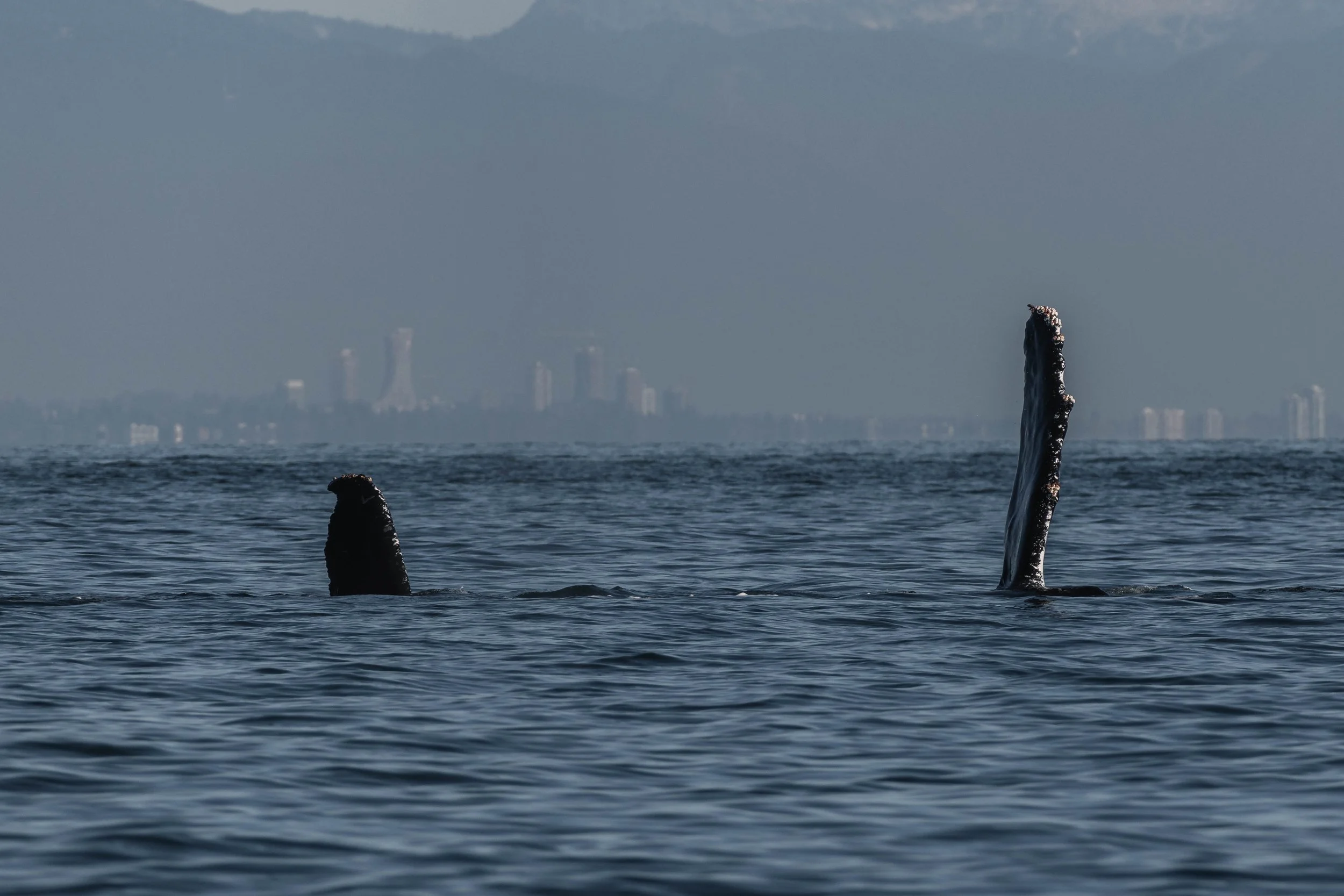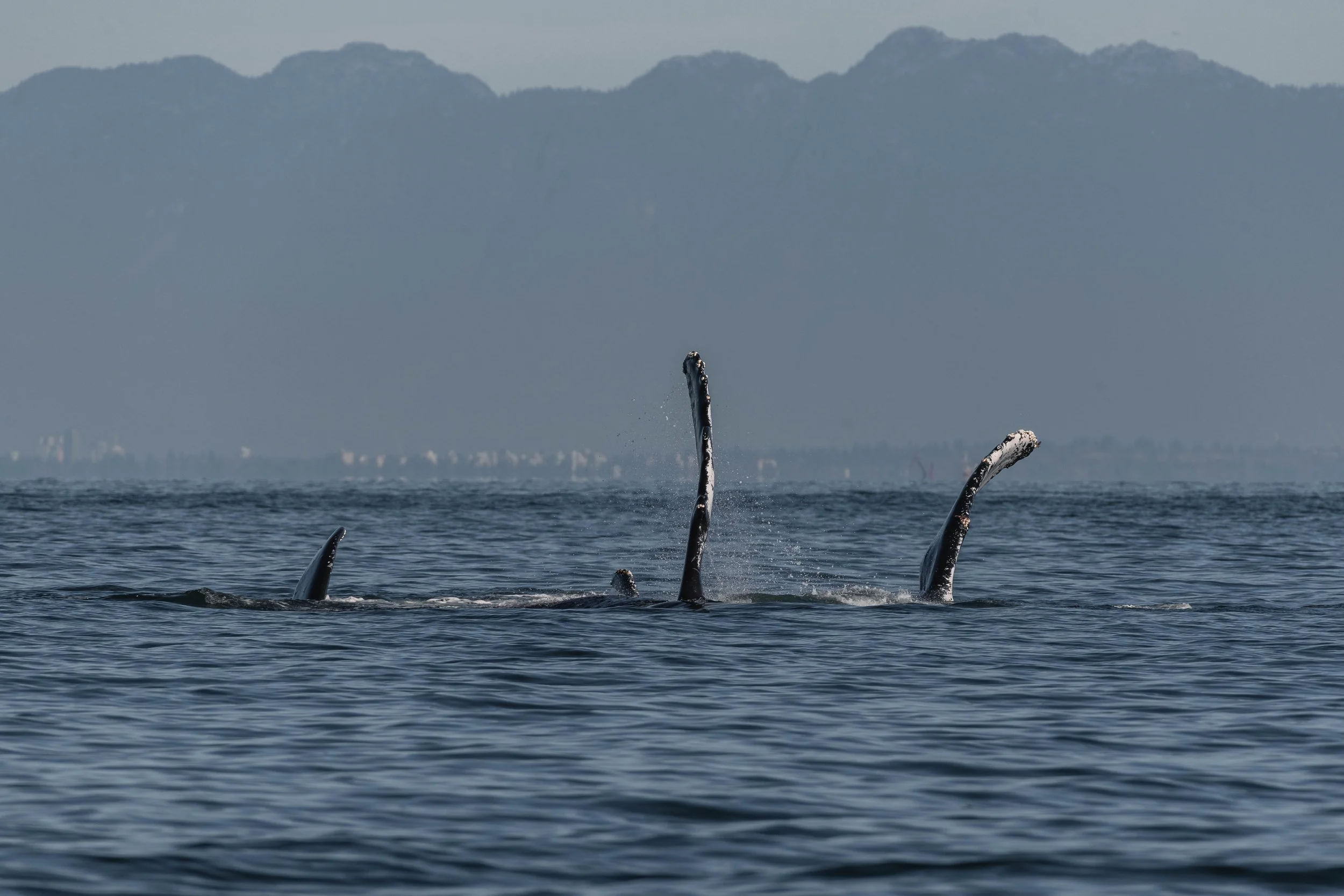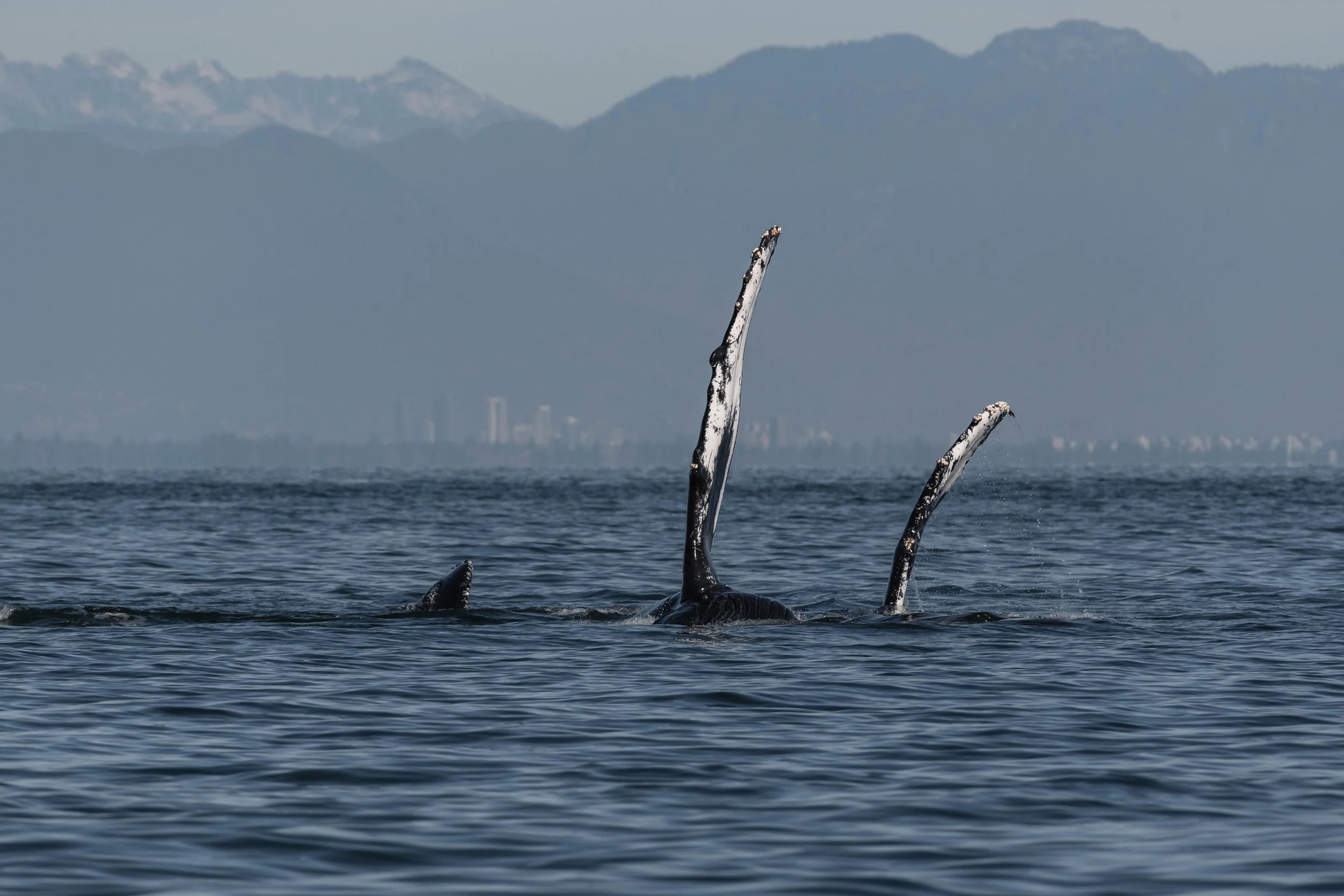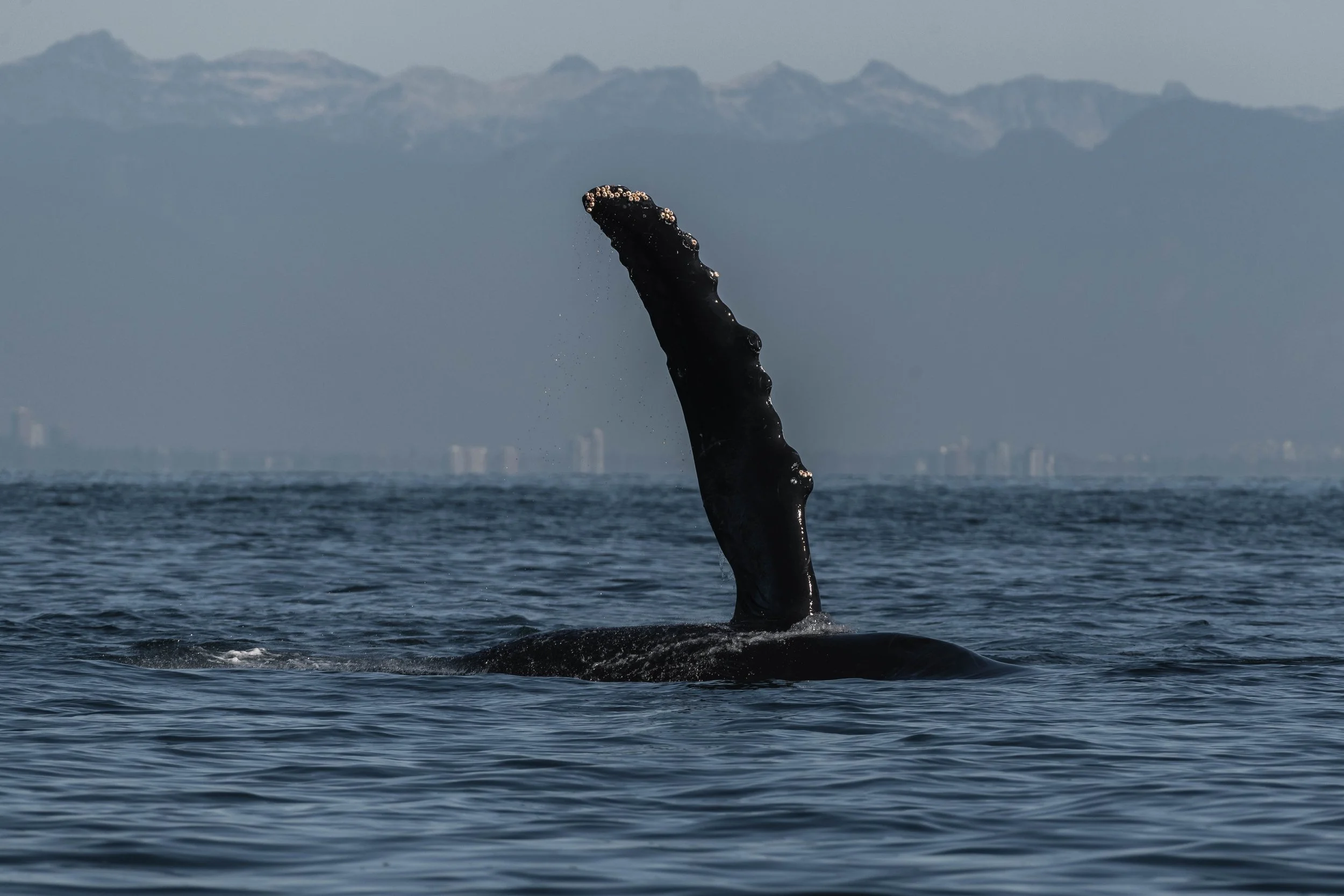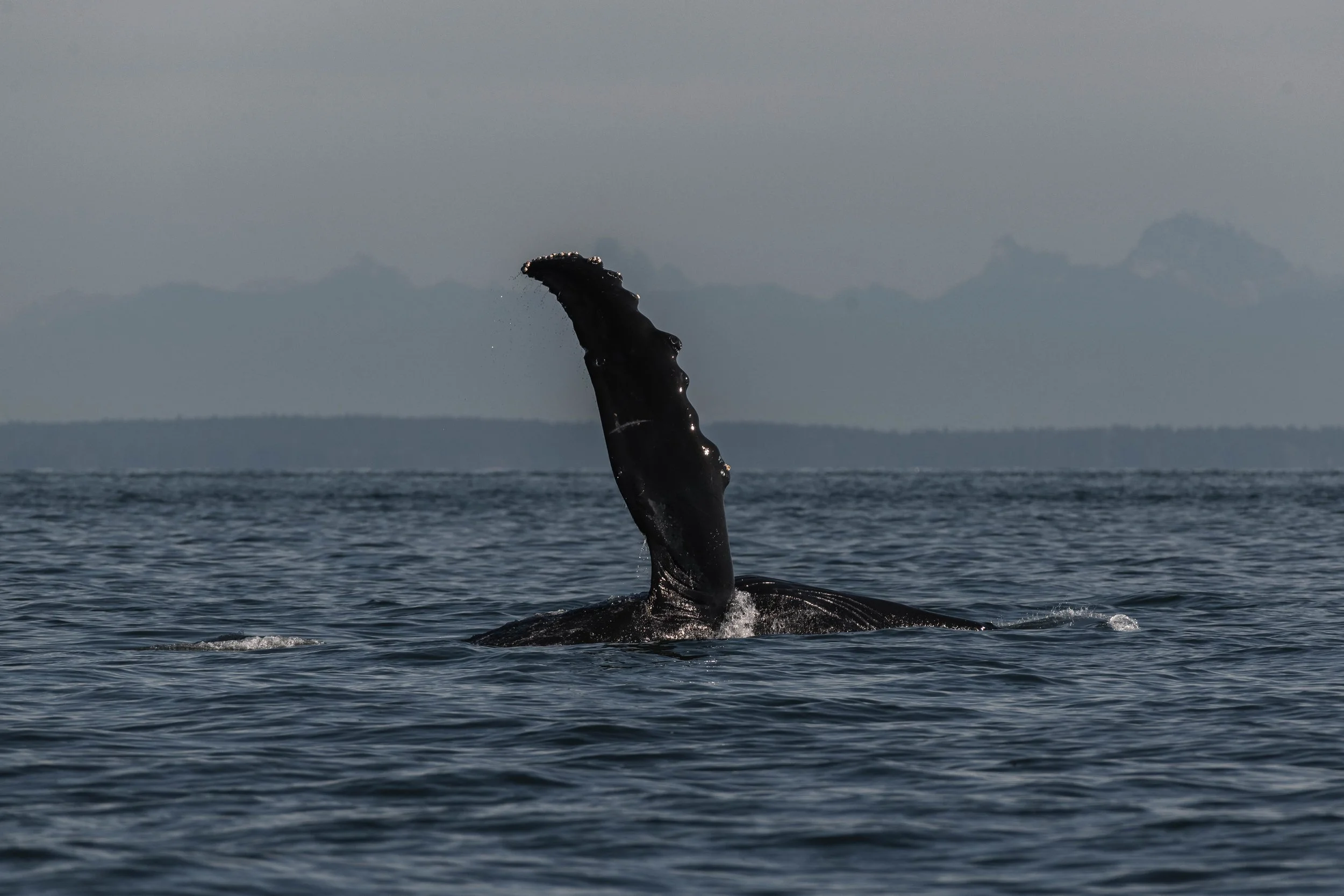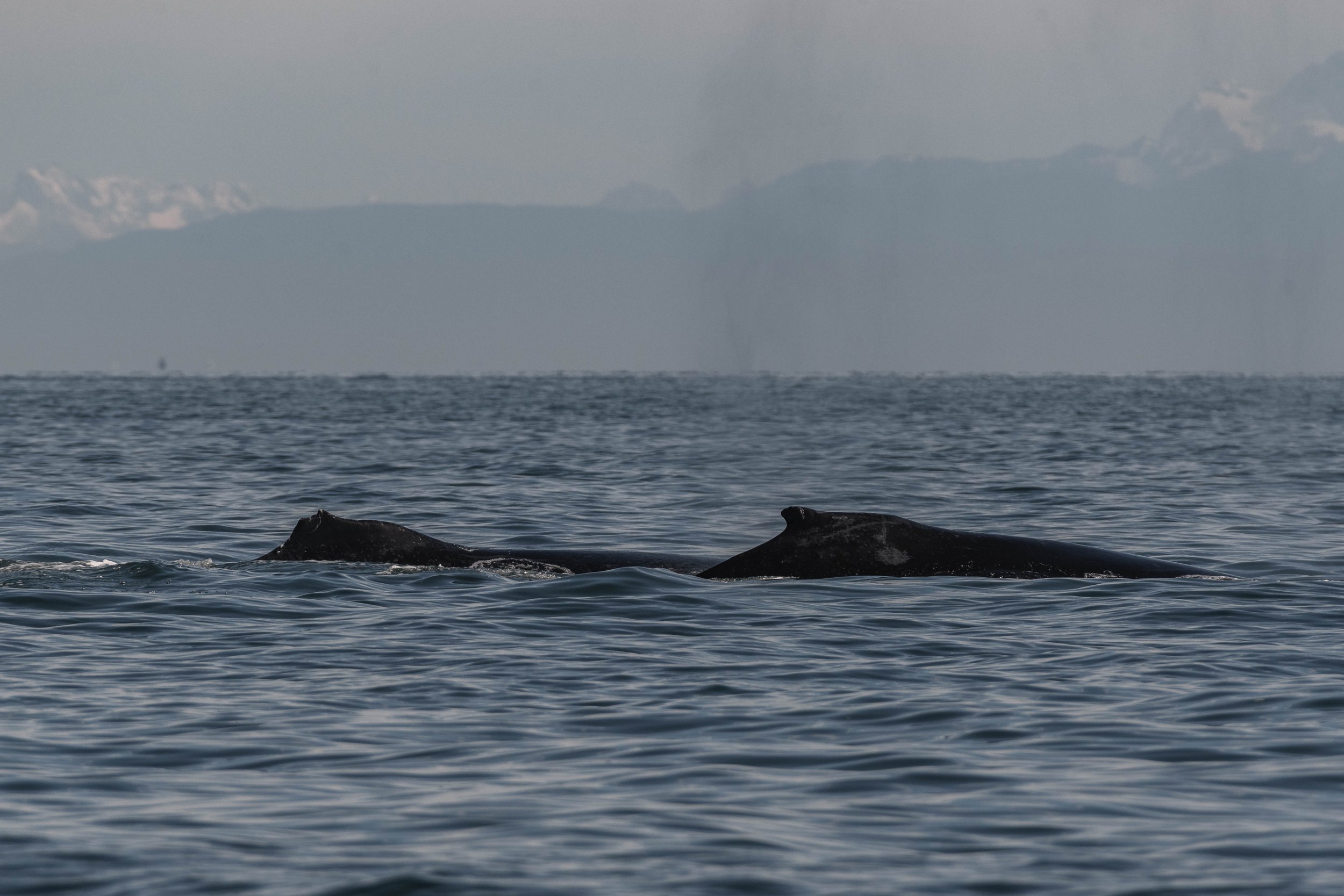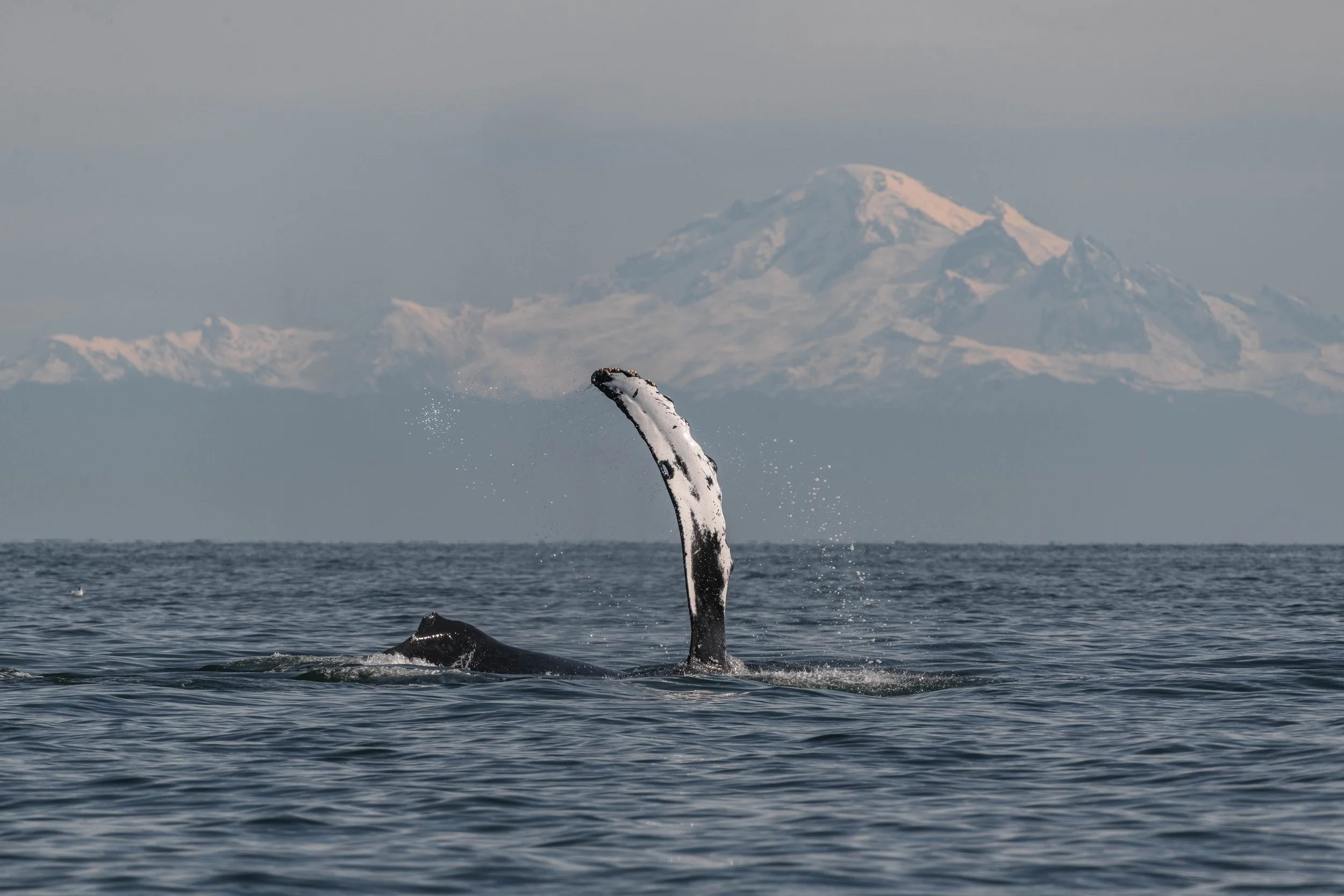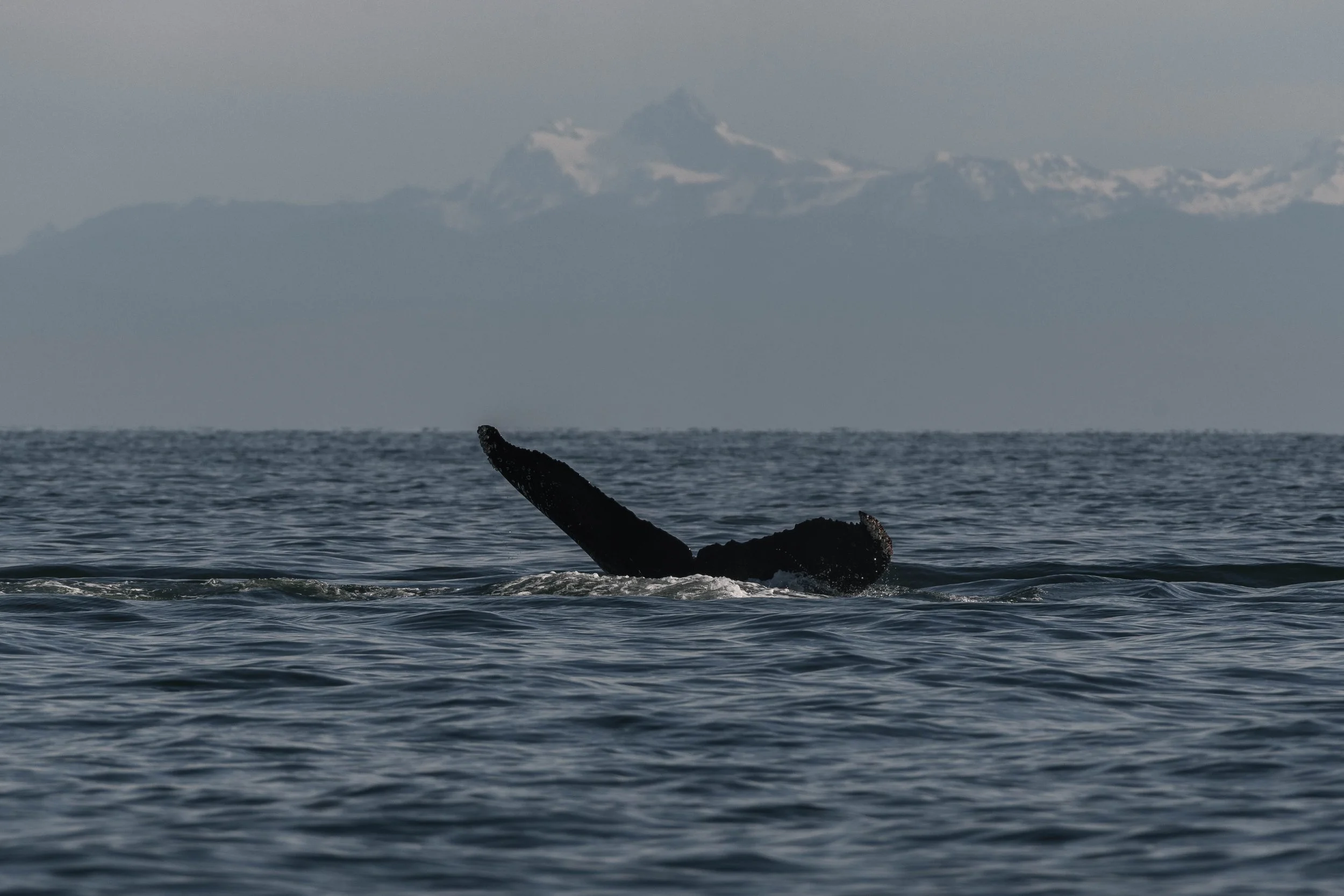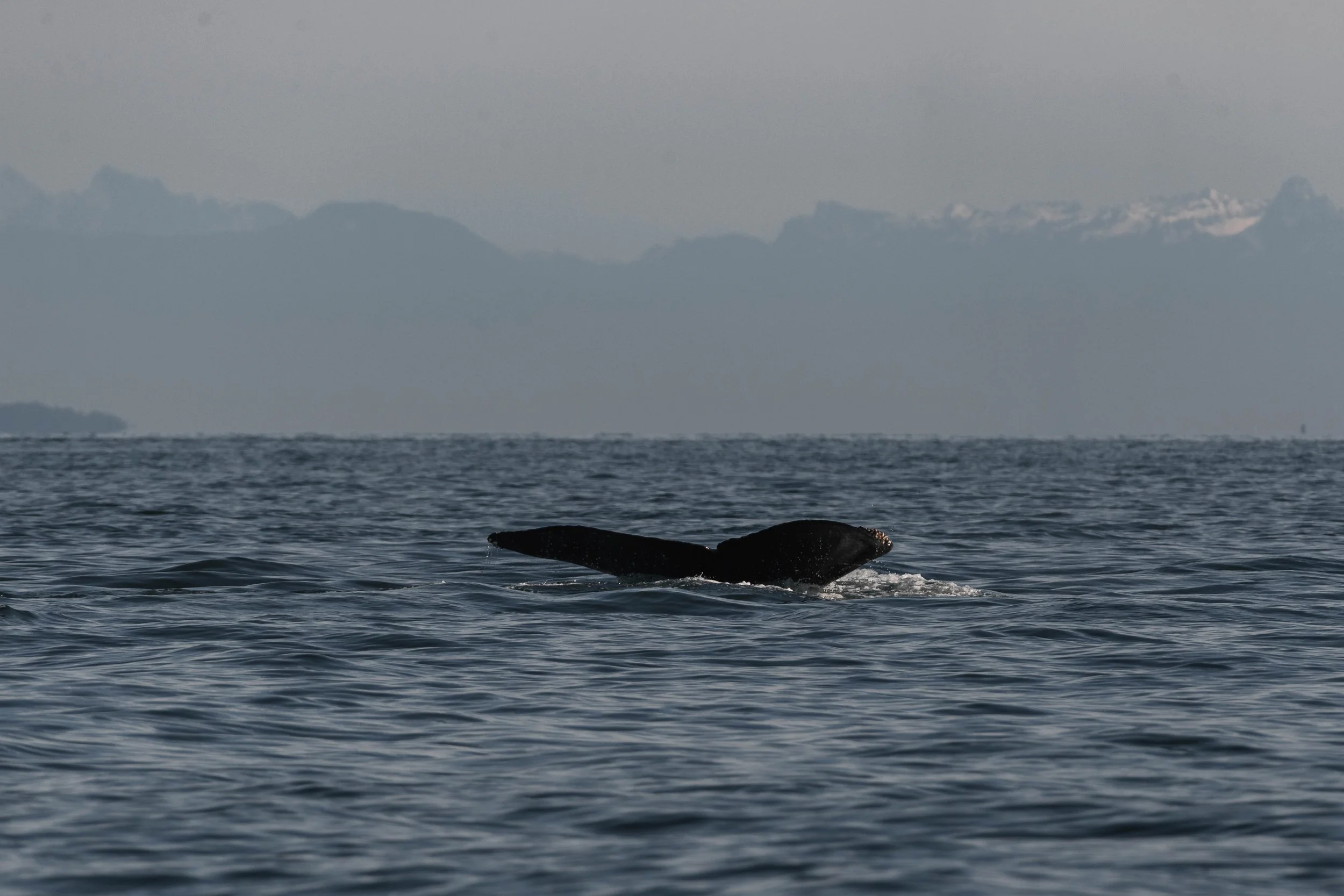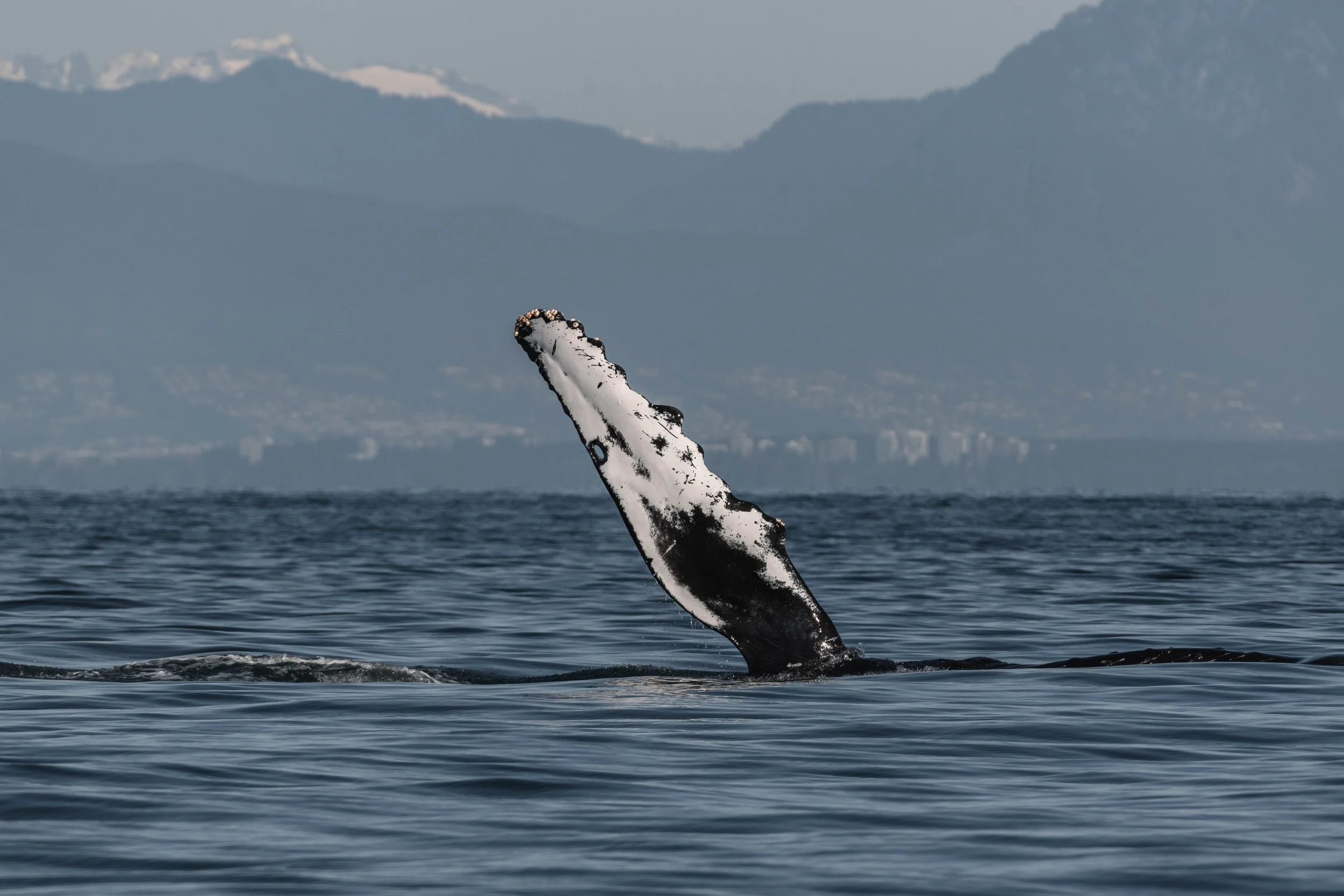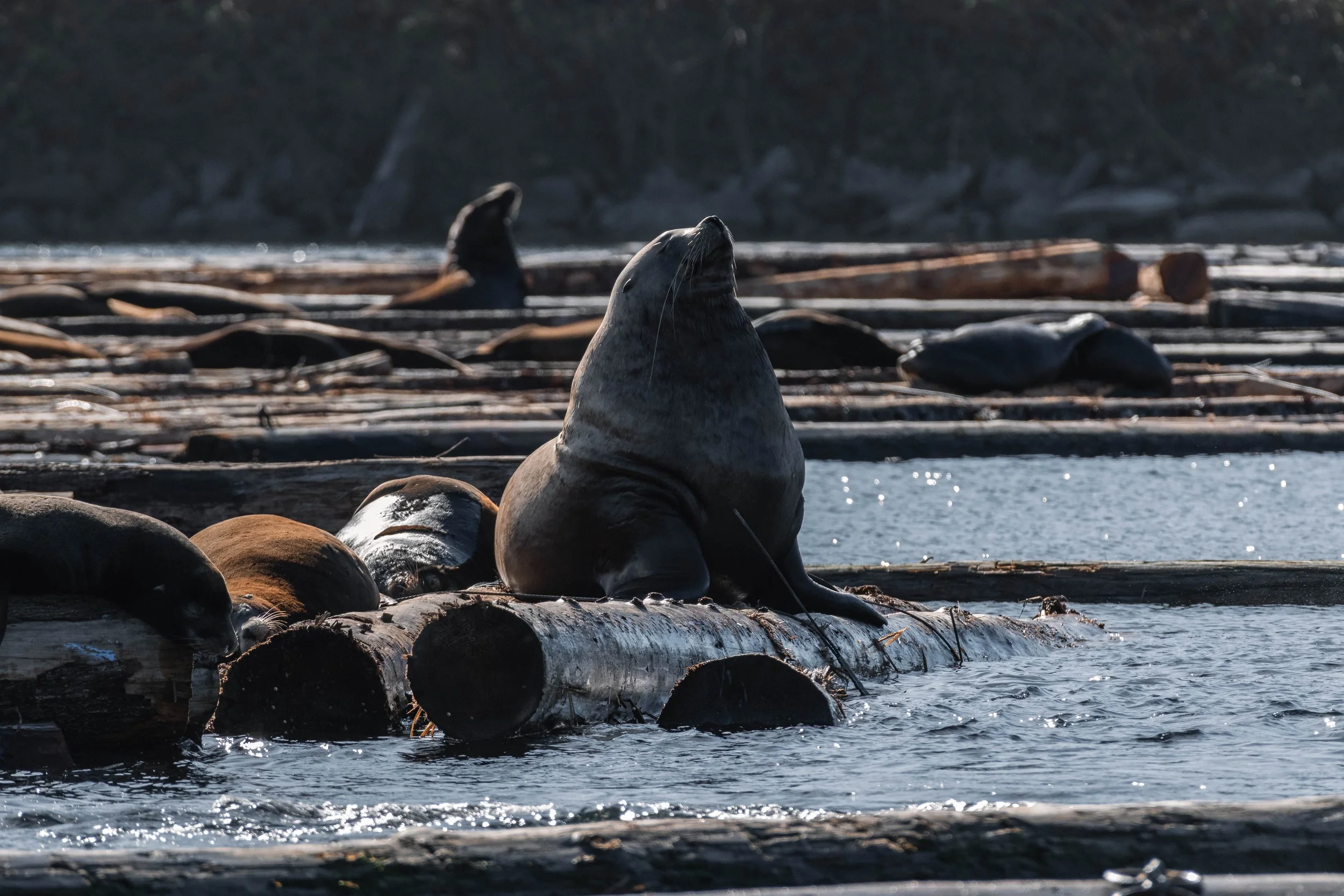October 15, 2025 - Double Species in the Strait of Georgia
Another exciting day awaited us out in the Salish Sea, and the adventure began almost immediately after leaving Nanaimo. We set out aboard our semi-covered vessel, Kula, heading south through Northumberland Channel and into Dodd Narrows, one of the region’s most dynamic passages. Strong tidal currents push through this narrow channel, making it an ideal feeding ground for marine wildlife, and sure enough, we didn’t have to wait long for our first encounter.
At the surface, we spotted splashing and commotion, and upon closer inspection discovered a Steller Sea Lion had caught itself a chum salmon for lunch! This is a common and important sight this time of year, as the salmon run transforms our coastal ecosystems. Each fall, thousands of salmon return from the open ocean to their natal rivers to spawn, bringing with them a huge influx of energy and nutrients from the sea.
The salmon run is not just vital for fish populations; it supports an entire web of life. Sea lions, harbour seals, and bald eagles all take advantage of this seasonal abundance, preying on salmon as they make their way along the coast. But even once the salmon reach freshwater, their journey is far from over. They must fight strong currents and evade more predators, such as black bears, grizzly bears, and eagles, before finally reaching the spawning grounds.
We often talk about how the rivers feed the ocean, delivering nutrients and freshwater that support the incredible productivity of the Salish Sea, but the salmon run is when the ocean gives back to the land. As predators catch and consume salmon near the riverbanks, the leftover carcasses are dragged into the surrounding forests. There, they decompose and release valuable nutrients, enriching the soil and helping trees grow stronger. Scientists have even found traces of marine nitrogen inside old-growth cedar and fir trees, carried there by salmon and their predators. It’s a powerful reminder that in the Pacific Northwest, the health of the forest, river, and sea are deeply intertwined, and protecting one means protecting them all.
From Dodd Narrows, we continued south toward Galiano Island after hearing reports of orca in the area. As we entered the Strait, our luck held, and we soon spotted the tall dorsal fins of a group of Bigg’s (Transient) Orca! Travelling together were four individuals:
T038C Borrowman (2008)
T038E Hocker (2017)
T065 Whidbey II ♀ (~1971)
T063 Chainsaw ♂ (~1978)
This was an exciting and somewhat unusual grouping, as we don’t often see Borrowman and his brother in our area. Watching these four peacefully travel side by side through the calm Strait was mesmerizing, their distinctive dorsal fins slicing through the surface, their rhythmic surfacing and dives perfectly in sync.
After parting ways with the orca, we continued our wildlife search and quickly came across a pair of humpback whales resting at the surface. These gentle giants were taking a break from feeding dives, drifting lazily with only the occasional blow. Later, after reviewing our photos, we were able to confirm that these two were Bullet (BCX1658) and Bump (BCY0771), two whales we’ve been fortunate to see in the area this season.
Since they appeared to be resting, we left them to their calm and quiet and continued our search further north. We’re glad we did, because the next sighting became the highlight of the trip!
In the distance, huge splashes caught our eye. As we approached, we realized the source: two massive humpbacks engaged in a series of spectacular surface behaviours. One was instantly recognizable by his distinct dorsal fin: Crater (BCX1565), a well-known and much-loved humpback in our region. His companion, later identified as Professor X (BCX1965), was equally impressive.
The pair were in the midst of chin-slapping, where the whale propels its 35-tonne body almost vertically out of the water before landing flat on its chin. The impact sends an enormous splash across the surface, visible from kilometres away! Their energy didn’t fade as we arrived; soon, they were rolling onto their sides, using their five-meter-long pectoral fins (the largest in the animal kingdom) to slap the water in a synchronized rhythm. These pec slaps are thought to be a form of communication or social play, and witnessing them up close was absolutely breathtaking.
As the sun dipped lower and the sea shimmered in the golden light, we reluctantly said goodbye to our playful pair and began the journey home. But the day’s excitement didn’t end there, our final stop was at the Harmac Pulp Mill, where the log booms provide a seasonal haul-out site for both Steller and California Sea Lions. The air was filled with the deep barks and bellows of these enormous pinnipeds, getting some rest before continuing their fishing at the nearby narrows.
From salmon to sea lions, from orca to active humpbacks, today’s trip was a perfect snapshot of the rich biodiversity that makes the Salish Sea so special. Every encounter reminds us how interconnected our land and sea ecosystems truly are, and how vital it is that we continue to protect both.
Please enjoy some of the highlights from today’s tour, captured by onboard Marine Naturalist Aly Kohlman.
Steller Sea Lion and his fresh fish lunch!
An Adult (left) and Juvenile (right) bald eagle waiting for some lunch together. Did you know their iconic white head doesn’t fully show until they are 5 years old?
T065 Whidbey II in the lead, followed by T038E Hocker and T038C Borrowman.
The iconic T063 Chainsaw.
A great look at T063 Chainsaw as he surfaces.
T065 Whidbey II and T038C Borrowman surfacing together.
T065 Whidbey II in the lead followed by T038C Borrowman.
A great look at T038C Borrowman.
The sibilings surfacing together: T038C Borrowman in the foreground and T038E Hocker in the back.
Bullet surfacing in the calm water.
Bump surfacing with the lingering blow visible.
A big chin slap in the distance.
After this vertical lift, they will slap their chin onto the water!
Professor X with her pectoral fin in the air, with Crater preapring to do the same just ahead of her.
Crater swimming on his side.
Crater (right) and Professor X (left) with their pectoral fins both in the air.
It looks like Professor X is much larger than Crater!
Professor X swimming on her back, with Crater on her side just behind her.
Professor X’s pectoral fin in the air!
Professor X swimming on her side with a pectoral fin in the air.
Professor X getting ready to slap her pectoral fin on the surface.
Professor X (right) followed by Crater (left). You can see how unique Craters dorsal fin is!
Professor X slapping her pectoral fin with Crater’s dorsal at the surface just behind her.
The underside of Crater’s tail.
The underside of Professor X’s tail.
Professor X’s right pectoral fin has this very distinct hole in it! These holes are usually caused by barnacles.
Professor X swimming on her side.
A Great Blue Heron at Harmac.
A very plump Steller Sea Lions relaxing on the log booms, surrounded by California Sea Lions.


